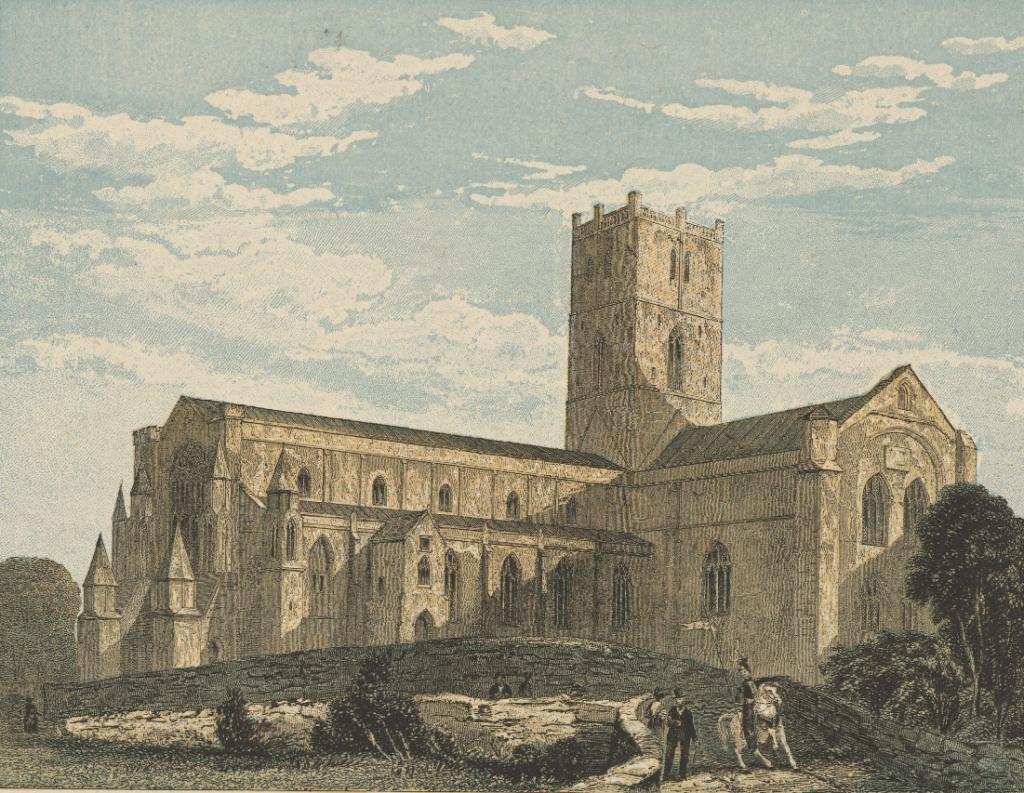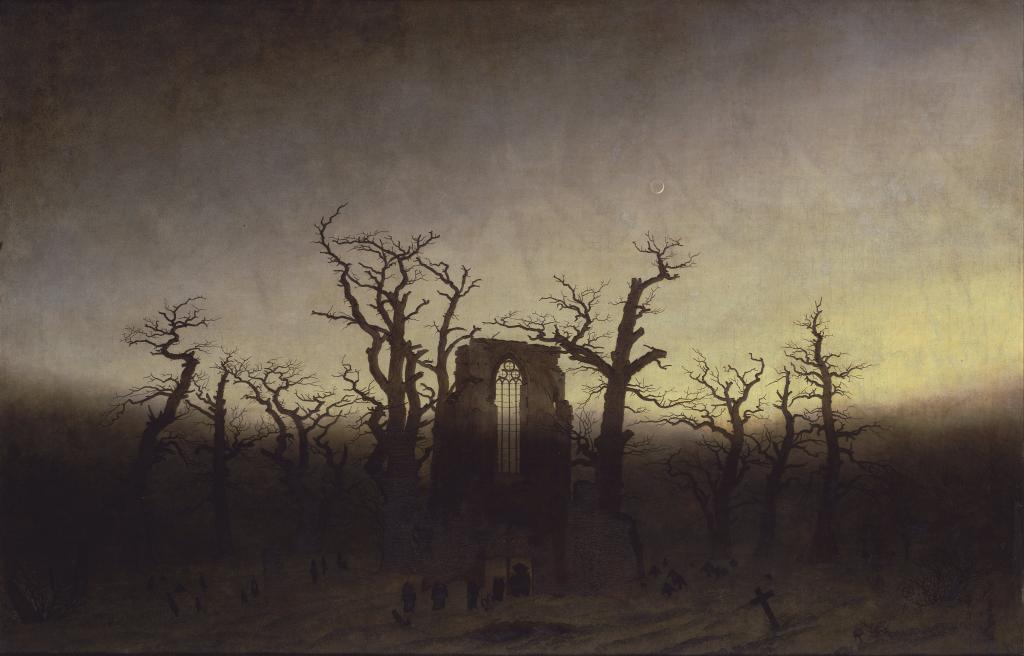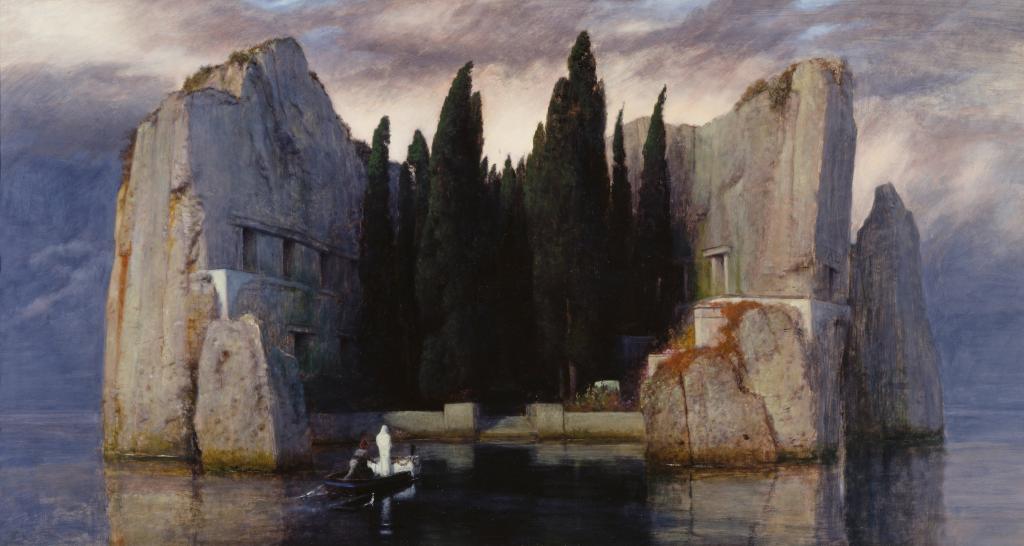I have a strictly seasonal reading recommendation, and one that is highly appropriate for the topic of this blog, in Christian history. If you have any interest in the themes of Halloween – ghosts, horror, and the thin space between worlds – you must read Walter De La Mare’s short story All Hallows (1926). You can easily find the story full text at multiple locations. It is a fast read if that is what you are looking for, but the gorgeous prose repays careful attention. It is, in short, a classic.
Walter De La Mare (1873-1956) was a dazzling writer in many genres, but his ghost and horror stories were a special strength. “All Hallows” tells of a traveler visiting a quiet and indeed deserted English cathedral. He is shown around by the verger, and in terms of action, that is most of what happens. The author knows his church architecture and history very well indeed, with its rood screens and finials, its transepts and buttresses.
But this particular church visit is like no other. As we learn gradually, the cathedral is not just haunted, it has been occupied and invaded by evil forces. And the problem is not that the cathedral is falling into ruin, but rather that the demons or devils are progressively remodeling the building and its statuary for their own mysterious ends. As H. P. Lovecraft wrote, appreciatively, this is “a glimpse of daemoniac forces besieging a lonely mediaeval church and miraculously restoring the rotting masonry.” Wholly through recounted third person accounts, we hear of the ruin and despair that has afflicted the cathedral clergy, and has driven away successive experts who have come to advise on restoring the building.
As with anything by De La Mare, you can read multiple interpretations into the story, not least because so much depends on the words and interpretations of the verger. So how reliable a narrator is he? And are we meant to read wider meanings into the text? Is the cathedral perhaps a symbol of England after a war that, as the verger says, was a supernatural event. “Look at your newspapers, sir. What they call the Great War is over — and he’d be a brave man who would take an oath before Heaven that that was only of human designing — and yet what do we see around us? Nothing but strife and juggleries and hatred and contempt and discord wherever you look.” Certainly the description of the statue remodeled by demons sounds a lot like the cutting-edge Modernist art of the period.
There is another source of interest for anyone interested in Christian history or culture. As I remarked in my previous blogpost, like many others of his generation, De La Mare was absolutely saturated in scripture, which he uses throughout the story to great effect, and it is interesting spotting all the references and echoes. As the verger declares, describing the spiritual enemies surrounding them,
“First: ‘I take it,’ says the Book, ‘to be such as no man can by learning define, nor by wisdom search out.’ [That is Ecclesiastes 8.17] Is that so? Then I go by the Book. And next: what does the same Word or very near it (I speak of the Apocrypha) say of their purpose? It says — and correct me if I go astray — ‘Devils are creatures made by God, and that for vengeance.’ ”
That is Sirach/Ecclesiasticus 39.28-31. M. R. James quotes the same verse in his “Canon Alberic’s Scrap-Book,” again in a demonic context.
But the best reason to read “All Hallows” is this. The story does a superb job in placing you in the mind of the narrator being escorted through this thoroughly haunted and lethal place, and you really do believe in those presences. You keep looking behind you.
And of course, Halloween is All Hallows Eve.
Caspar David Friedrich, Abtei im Eichwald (1810)
William Wooten is the editor of a fine new book on Reading Walter De La Mare (Faber 2021), which makes a powerful case for seeing him as a significant poet, besides his other contributions. As the description says,
Walter de la Mare (1873–1956) was one of the best-loved English poets of the twentieth century, his verse admired by contemporaries including Thomas Hardy, Robert Frost, W. H. Auden and T. S. Eliot. This volume presents a new selection of de la Mare’s finest poems, including perennial favourites such as ‘Napoleon’, ‘Fare Well’ and ‘The Listeners’, for a twenty-first-century audience. The poems are accompanied by commentaries by William Wootten, which build up a portrait of de la Mare’s life, loves and friendships with the likes of Hardy, Rupert Brooke, Edward Thomas and Katherine Mansfield. They also point out the fascinating references to literature, folklore and the natural world that embroider the verse.
Arnold Böcklin, Die Toteninsel III (1883)
On the theme of hauntings, I can’t resist this opportunity to repeat what might be my all time favorite lines in horror fiction. It is of course the opening of Shirley Jackson’s The Haunting of Hill House (1959):
“No live organism can continue for long to exist sanely under conditions of absolute reality; even larks and katydids are supposed, by some, to dream. Hill House, not sane, stood by itself against its hills, holding darkness within; it had stood so for eighty years and might stand for eighty more. Within, walls continued upright, bricks met nearly, floors were firm, and doors were sensibly shut; silence lay steadily against the wood and stone of Hill House, and whatever walked there, walked alone.”















